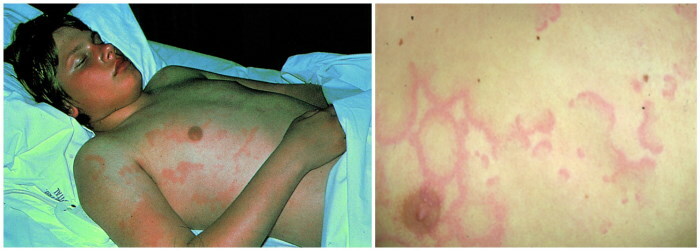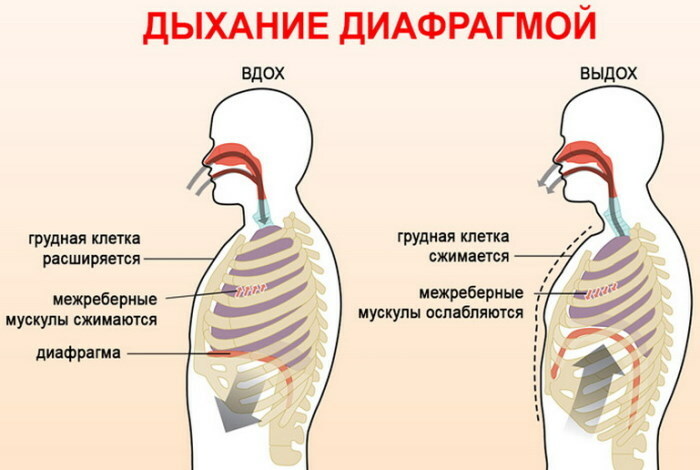Content
- Difference between emergency and emergency care
- What conditions are considered urgent
- How are emergencies diagnosed
- The main stages and methods of providing emergency medical care
- Emergency care for therapeutic patients
- Emergency care in arrhythmology
- Emergency care in cardiology
- Emergency care for myocardial infarction
- Emergency care for pregnant women
- Emergency care for pulmonary pathology
- Emergency care for neurological pathology
- Emergency care for abdominal pathology
- Urgent care for kidney failure and diabetes
- Legal documents and legislation regarding emergency medical care
- Emergency Medicine Videos
Under emergency medical care understand a set of measures of a medical nature and aimed at treating a person's conditions that can threaten his life. Such measures can only be taken by people who have a certain training: these are doctors of various specialties, rescue workers, police officers and specially trained volunteers.
Difference between emergency and emergency care
In the patient's view, there is not much difference between the terms urgent and emergency care, but there is a legislative basis that distinguishes between these concepts and makes various requirements to doctors for the provision of one or another type of assistance, which are fundamental for employees of ambulance brigades help.
The table summarizes the main differences between emergency and urgent care:
| Assistance criteria | Emergency medical assistance | Emergency medical care |
| Threat to human life | There is | Missing |
| Grounds for providing medical intervention | The will of the patient himself or the appeal of any other person who has witnessed the deterioration of the person's condition. | The will of the patient or his legal representatives (parents, guardians, trustees). |
| Terms of assistance | Outside a medical facility (prehospital phase) or in a medical facility (hospital care phase). | In an outpatient clinic or at home |
| Person obliged to provide assistance | Doctor or paramedic working in the ambulance team | Specialist doctor: therapist, cardiologist, surgeon and others |
| Ambulance arrival time | Up to 20 minutes inclusive | Less than 2 hours |
| Prescribing treatment | Doesn't write out certificates and directions | Gives recommendations for further treatment |
| Charging fees | Not allowed | Allowed |
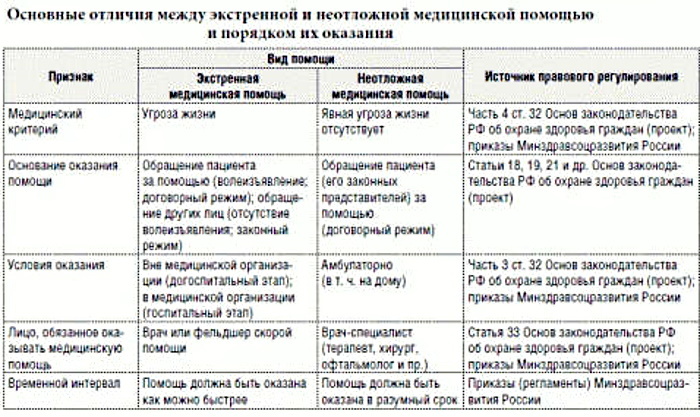 The terms urgent and emergency care are not synonymous and differ in many ways.
The terms urgent and emergency care are not synonymous and differ in many ways.
What conditions are considered urgent
Emergency medical care is taking measures to eliminate emergency conditions that lead to disturbances in the functioning of body systems that are important for life and require urgent medical intervention workers.
Such conditions include acute pathologies that have arisen suddenly (shock from an injury, asphyxia or poisoning), as well as complications of chronic diseases, for example, a hypertensive crisis or coma that appeared on the background diabetes. Emergencies are managed by resuscitators or ambulance paramedics, although all medical workers are required to have such skills.
Conditions that threaten life differ in terms of the reasons for their appearance and the mechanism of action, therefore, at the first stage of diagnosis, it is important to correctly determine their type. The algorithm for providing assistance will depend on this.
There are 3 groups of emergency conditions:
- Traumatic injury. They appear from the effects on the human body of factors such as temperature, chemicals or physical influences. Among these injuries, the most common are frostbite, fractures, violations of the integrity of internal organs and burns. Diagnosed on the basis of an external examination.
-
Poisoning and allergic reactions. Such conditions arise when foreign substances enter the body in various ways, most often these are mushrooms, poisonous plants, drugs and chemicals, alcohol, snake venoms. The absence of visible injuries on the patient's body complicates the diagnosis.
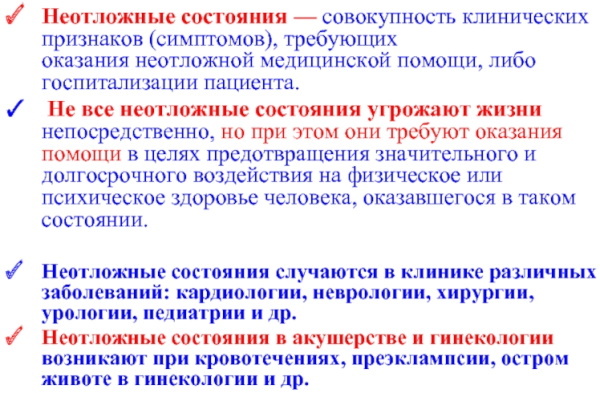
- Pathology of internal organs. They develop against the background of dysfunction of various body systems. Such conditions, for example, include: stroke, hypertensive crisis, myocardial infarction. Diagnosed on the basis of laboratory and instrumental techniques.
How are emergencies diagnosed
There are a number of criteria for the diagnosis of any emergencies during the initial examination, the assessment of which will help to recognize that the patient is in critical condition and needs help.
These criteria include:
- position of the human body;
- expression of the facial region of the head;
- color and moisture content of the skin;
- heart rate;
- the frequency and nature of the acts of inhalation and exhalation;
- blood pressure level.
To assess the severity of a patient in intensive care, it is necessary to check the work of life-supporting functions, such as:
- external respiration;
- movement of blood along the bed of blood vessels;
- consciousness.
Also, urgent conditions, that is, those conditions that can lead to disruption of the functioning of vital organs and even death of the patient, if he does not have provided medical care, characterized by the appearance of fever, pain of various types, intoxication syndrome, mental disorders and dehydration.
An ambulance should be called if the following conditions are observed:
- severe and severe weakness;
- inhibition of reaction to external stimuli;
- loss of consciousness;
- speech disorders;
- profuse blood loss;
- blanching or blue discoloration of the skin;
- convulsions;
- vomit.
The doctor can carry out the primary diagnosis of a critical condition by a person who is next to the patient. However, you should not take any measures yourself, incorrect first aid can only harm.
The main stages and methods of providing emergency medical care
A medical emergency is one that must be provided immediately. It includes a number of stages, the first of which is the provision of first aid. It can be carried out by any person and consists only in eliminating the factor that poses a threat. Further actions should be carried out only by trained people, for example, police officers or employees of the Ministry of Emergency Situations.
Before the arrival of the ambulance team, they can take urgent measures to restore important functions of organs:
- stop the bleeding;
- do an indirect heart massage;
- apply a bandage;
- transport a person to a medical facility.
The next stage is the provision of medical assistance on the spot by ambulance staff. The method of action of a paramedic or doctor depends on the nature of the damage.
They are mainly:
- stop the action of the factor that causes damage;
- change the position of the patient;
- guarantee oxygen access;
- immobilize the limbs.
And the last stage is the comprehensive implementation of all the necessary measures by specialized specialists to restore the normal functioning of organs and systems in a medical institution.
Methods for providing emergency medical care differ depending on the nature of the damage and its location.
Emergency care for therapeutic patients
A large number of diseases belong to the type of therapeutic pathologies. The choice of a method for providing emergency care depends on a quick and high-quality diagnosis, which also determines the effectiveness of treatment.
One of the most dangerous conditions is a hypertensive crisis.
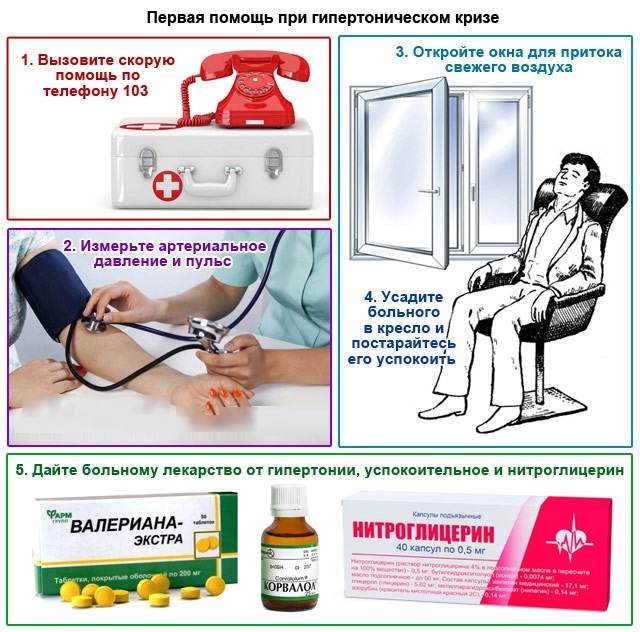 It can be identified by the following symptoms:
It can be identified by the following symptoms:
- acute pain in the head area;
- nausea with and without vomiting;
- feeling that hands, lips and tongue are numb;
- weakness;
- increased blood pressure;
- double image in the eyes.
In order to stop this condition, you need:
- to provide the patient with a comfortable position, laying him down on a horizontal surface, and an influx of fresh air;
- give a tablet of clonidine sublingually (for type 1 crisis);
- inject 50 mg of Pentamine intravenously if there is an increase in blood pressure;
- enter 30 mg of Propranolol if tachycardia persists;
- inject furosemide intravenously (with type 2 crisis).
The main task of emergency care is to lower blood pressure, then the patient must be taken to a medical facility for complex treatment.
Emergency care in arrhythmology
Emergency medical care in arrhythmology is to relieve the symptoms of an arrhythmia attack.
To do this, you need:
- Place the patient in a comfortable position (sitting or lying).
- Explain the principle of breathing exercises and carry out it for 5-10 minutes. The essence of gymnastics: you need to take a deep breath, hold your breath for 2-3 seconds, and then exhale slowly.
- Lightly massage the carotid artery in the place where it pulsates most strongly.
- Ask the patient to close their eyes and press the eyelid several times with slight effort.
- Wipe or spray your face with cold water.
After the measures taken, the rhythm of the heart will restore, after which you need to give a sedative, for example, Corvalol or motherwort.
Emergency care in cardiology
The main sign indicating the need for emergency care associated with a cardiac disease is acute pain in the heart region for half an hour or more.
Other symptoms may also occur:
- severe pain in the sternum, radiating to the arm, shoulder and neck on the left side of the body;
- cyanosis of the skin;
- dyspnea;
- increased sweating;
- decrease in the rhythm of the heart.
In order to alleviate the patient's condition, it is necessary to give him a horizontal position, give a nitroglycerin tablet and ensure his complete relaxation. If a person has lost consciousness, it is necessary to carry out an indirect heart massage together with artificial respiration.
Emergency care for myocardial infarction
Emergency medical care is one that, if not provided, can lead to serious disruption, even death. One of the conditions where this type of assistance is required is myocardial infarction. It develops against the background of a sharp violation of blood circulation through the vessels of the myocardium, due to which a section of the heart muscle dies off.
Before calling a doctor, it is necessary to provide first aid:
- bring the patient to a state of rest;
- give it a horizontal position;
- remove or unbutton clothing that may hinder movement.
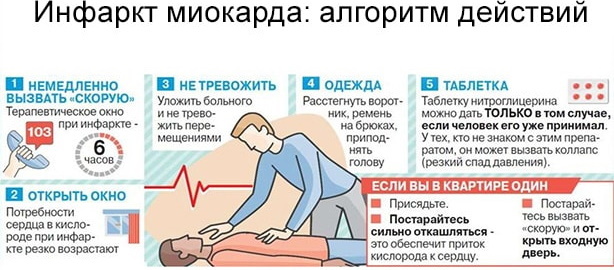
Upon arrival, the ambulance team performs the following actions:
- makes an electrocardiogram;
- relieves pain syndrome by intravenous administration of 2 ml of one percent morphine or Tramadol in 10 ml of sodium chloride at a concentration of 0.9%;
- gives one nitroglycerin tablet under the tongue at a dosage of 0.0005 g from 2 to 4 times.
The person is then hospitalized for assistance in a medical facility.
Emergency care for pregnant women
During pregnancy, most of all emergencies are associated with profuse bleeding, resulting in hemorrhagic shock.
However, there are other reasons for the development of an emergency condition:
- placental presentation;
- early detachment of the normal placenta;
- spontaneous abortion;
- gestosis;
- the likelihood of uterine rupture;
- tubal pregnancy.
The algorithm for providing emergency care may differ depending on the pathology, but it has a number of common stages:
- Establishing diagnosis.
- Assessment of the general condition of the patient.
- Providing first aid.
- Transportation to a medical institution.
The most dangerous are: detachment of the placenta, preeclampsia and rupture of the uterus.
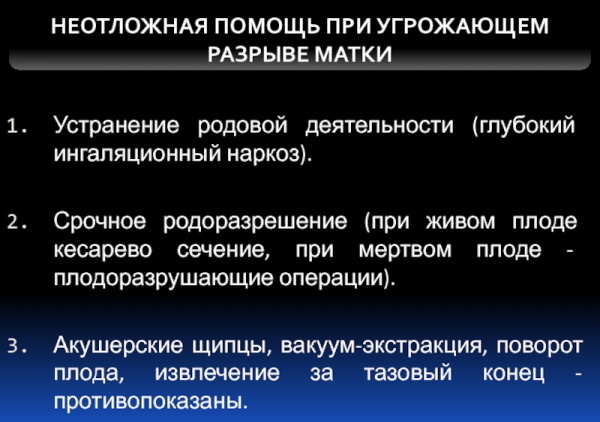 The stage of first aid, which is provided on the spot by ambulance staff for a pregnant woman with placental abruption, includes:
The stage of first aid, which is provided on the spot by ambulance staff for a pregnant woman with placental abruption, includes:
- opening the fetal bladder;
- inserting a catheter into a vein;
- introduction of solutions into the bloodstream;
- elimination of bleeding;
- anesthesia.
With the development of severe histosis, an ambulance paramedic administers the following drugs to a pregnant woman:
- magnesium sulfate solution;
- drugs that lower blood pressure;
- sibazon;
- antispasmodics.
Also, blood pressure is monitored every quarter of an hour. When the uterus ruptures, first aid is not provided, the patient is transported to a medical institution, ensuring the maximum preservation of her calm state.
Emergency care for pulmonary pathology
The algorithm for providing emergency care for pulmonary pathology depends on its nature. The most dangerous are pulmonary hemorrhage, SARS and bronchial asthma.
In order to provide emergency care to a patient with pulmonary hemorrhage, the following steps must be taken:
- Calm down and give a semi-seated position with an inclination towards the damaged lung.
- Apply something cold to the chest area and feed with ice cubes.
- Introduce drugs that slow bleeding.
- Hospitalize.
In this case, the victim is strictly forbidden to talk.
With atypical pneumonia, within the framework of first-aid care, it is necessary to introduce drugs:
- analgin (intramuscularly);
- cordiamine (intravenously or under the skin);
- hydrocortisone (intravenously if blood pressure drops sharply).
Also, emergency measures include a forced supply of oxygen, that is, oxygen therapy.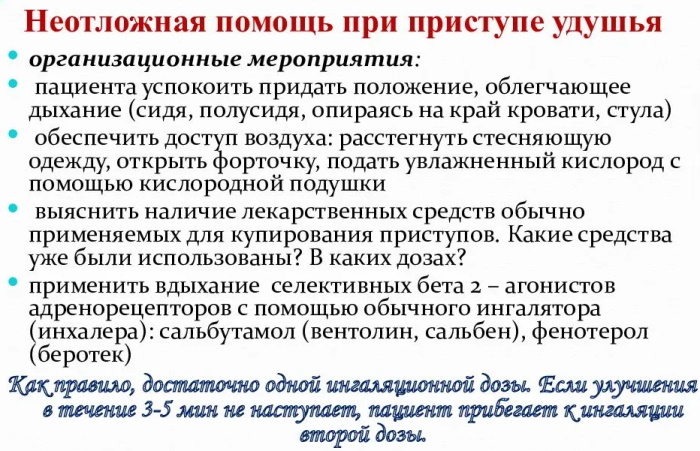
To provide emergency assistance to a patient with bronchial asthma, you need to follow the steps:
- relieve bronchial spasms with stimulants;
- use drugs that prevent the formation of edema;
- carry out artificial ventilation of the lungs and provide an additional flow of oxygen;
- adjust metabolism;
- clear the airways.
Other lung diseases rarely require emergency treatment.
Emergency care for neurological pathology
Emergency medical care is a set of measures aimed at eliminating diseases that can threaten human life.
Among neurological pathologies, emergency help is often needed for:
- fainting;
- convulsions;
- strokes.
If fainting occurs within the framework of first aid, the following steps must be taken:
- Give the victim a horizontal position so that the head is below the level of the legs.
- Unbutton or remove clothing that hinders breathing and allow oxygen to flow.
- Allow to smell cotton wool soaked in ammonia.
- Moisten face with cool water.
- In severe cases, caffeine can be given intravenously.
Hospitalization for fainting is most often not performed.
If seizures occur, the patient needs to:
- Place horizontally away from objects that could cause injury.
- Remove or unbutton clothing that is blocking oxygen.
- Turn your head to one side and pinch your tongue to avoid sinking it.
- Administer anticonvulsants.
- Hospitalize.
In the case of a stroke, at the stage of first aid, first of all, they struggle with disabilities of the organs important for life. For example, with difficulty breathing, artificial ventilation of the lungs is done, and with increased pressure, drugs are injected that can lower it. Thus, the algorithm for stroke emergency care can be different depending on the most affected organs.
Emergency care for abdominal pathology
The list of the most dangerous abdominal pathologies includes:
- acute appendicitis;
- intestinal obstruction;
- intestinal bleeding.
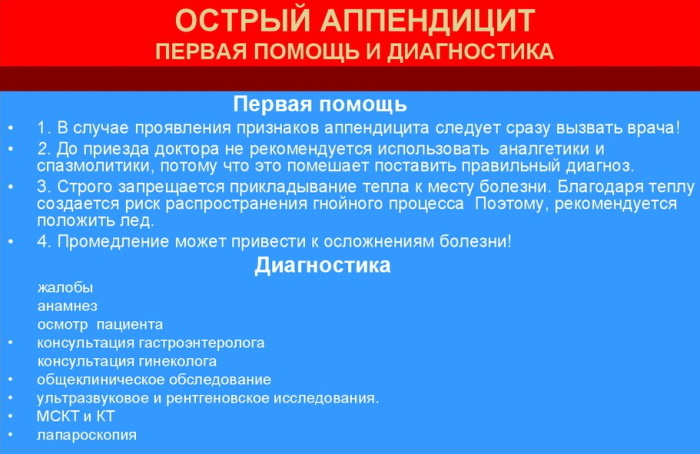
In case of any suspicion of appendicitis, first-aid assistance is not provided on the spot, the patient is sparingly transported to the surgical department of the hospital. At the same time, it is strictly forbidden to apply warm objects to the abdomen and inject drugs that have a laxative effect.
Identification of intestinal obstruction is also a reason to admit the patient to the hospital. In this case, an ambulance paramedic, as an emergency, can intravenously inject a glucose solution with insulin and potassium chloride.
Emergency care for intestinal bleeding consists in urgent transportation of the victim to the surgical department.
In this case, you must perform the following steps:
- place ice or something very cold in the abdomen;
- prohibit the patient from eating and drinking;
- inhalation with an oxygen concentration of 50%;
- introduce drugs that help reduce blood loss.
During transportation, the person must be exclusively in a horizontal position.
Urgent care for kidney failure and diabetes
Emergency care for a patient with renal failure is provided on the spot with the use of a large number of drugs only if he is in shock. In other situations, a person is taken to the hospital for assistance.
Ambulance includes several stages:
- Restoration of heart rhythm and removal from shock by administration of albumin, Ringer's solution, mannitol, sodium chloride and glucose.
- Elimination of urine by intravenous administration of furosemide or aminophylline.
- Restoration of the ability of the kidneys to filter through forced diuresis.
- Restoration of water-salt metabolism and acid balance. To do this, the amount of incoming fluid is limited and glucose and insulin are administered.
- Adjusting the balance of water and electrolytes by increasing the intake of fluids and adjusting the diet, which removes the inhibitions on salty foods.
All drugs used in emergency treatment for kidney failure are given intravenously.
Legal documents and legislation regarding emergency medical care
The basis of the right of citizens to receive emergency medical care is 41 Art. The Constitution, which states that everyone has the right to health care and medical care. According to this provision of the Constitution, all citizens of the Russian Federation can receive medical care free of charge at the expense of budget funds.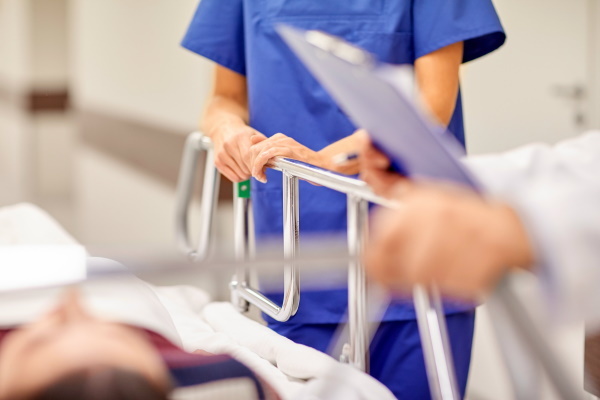
This right is supported by federal law 323 of 11/21/2011, which determines that every citizen can not only count on receiving help, but is also obliged to provide emergency assistance to someone whose life is in danger due to any extreme situation.
First of all, such duties are assigned to:
- police officers;
- firefighters;
- emergency workers.
The volume and types of medical care that can be provided free of charge is determined by 80 Art. Federal Law No. 10 of November 21, 2011.
Citizens of the Russian Federation, in case of need for emergency medical care, can count on that it will be provided in a timely manner, in full and free of charge, because this is enshrined in the legislative level.
Emergency Medicine Videos
Emergency medical care:

